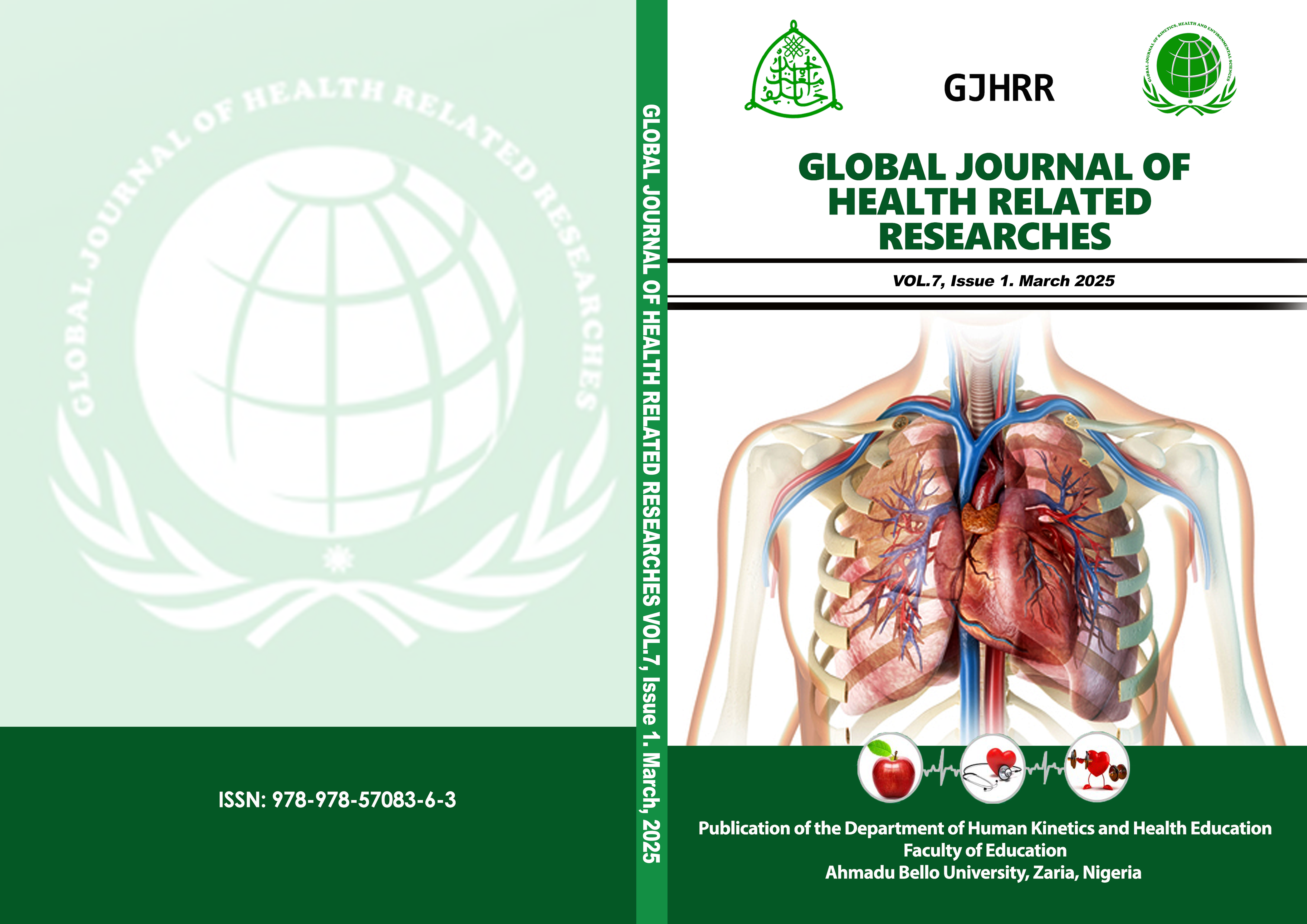FACTORS ASSOCIATED WITH THE UTILIZATION OF YOUTH- FRIENDLY SERVICES BY OUT-OF-SCHOOL YOUTHS IN IBADAN METROPOLIS, NIGERIA
Abstract
The need to improve out-of-school youths' reproductive health challenges is being increasingly recognized throughout the
world. Youths with reproductive health challenges do not seek appropriate services. Earlier studies in Oyo State focused on
utilising youth-friendly clinics for secondary school students but not among out-of-school youths. This study was therefore
designed to determine the factors associated with assessing Youth-Friendly Clinic (YFC) services utilisation by out-of-school
youth in Ibadan Metropolis, Nigeria. The study was descriptive and cross-sectional in design. A four-stage random sampling
technique was adapted to select LGAs, wards, communities and 521 consenting respondents. A semi-structured interviewer-
administered questionnaire was used to elicit information on respondents’ socio-demographic characteristics, knowledge of
YFC and utilisation. Knowledge of YFC utilisation was measured on a 14-point scale; scores of 5, >5-10 and >10 were
categorised as good and poor, respectively. A Focus Group Discussion guide was used for qualitative data collection. The
quantitative data were analysed using descriptive statistics, Chi-square and linear logistic regression tests at p=0.05. Qualitative
data were analysed thematically. Respondents’ mean age was 20.6±2.8 years; 52.6% were males, and 39.9% lived with their
parents. Less than a quarter, 20.0% and 10.2%, were currently learning tailoring and patent medicine vendors training,
respectively. The majority (88.0%) of the respondents heard about YFC for the first time, 92.9% had poor knowledge of YFCs,
only 91.9% had ever used or visited YFC, and 47.1% had ever used/visited YFCs more than one month before the study. Most
(72.2%) respondents preferred having youths as service providers in YFC, and 54.5% pointed out that female service providers
understand females better. A few of those who used YFC (19.5%), (14.4%), and (11.0%) suggested more efficient staff, that
staff should be more patient-friendly, and that they should create awareness on media, respectively. Among respondents that
never used YFC, the three major barriers reported were less awareness of the public about YFC (27.3%), lack of adequate
drugs (19.2%) and distance (18.2%). About one-fifth (20.4%) expected YFC to provide free medicines and (19.8%) free
treatment. Respondents’ age ≥20 was significantly associated with knowledge of YFC. Living with their parents’ father, mother
and peers was significantly associated with utilising YFC. Respondents who heard about YFC were more likely to utilise YFC
than those with low awareness and poor knowledge (OR:0.024;95%CI=0.006-0.0014). The FGD discussants felt YFC is
important in addressing the health problems of apprentices and unanimously agreed that lack of awareness and poor knowledge
were the major barriers to utilisation. Knowledge of out-of-school youths in the Ibadan metropolis on utilising YFC was poor.
Awareness creation through Information Education and Communications materials would help increase knowledge and
patronage of YFC.
